October 31, 2021 (Updated Nov. 5, 2021)
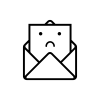
[Update Nov 5, 2021] In response to my questions I have received a letter from the Provost of the University, Prof. Lisa Philipps.
Only the academic freedom question was addressed.
The administration of York University has announced a return to face-to-face teaching in January 2021, with changes in COVID protocols that emphasizes "0 m" interactions with students.
For months, I've been asking for justifications on matters related to COVID, mostly related to ventilation. The reason is that, while experts recommend a layered ("Swiss Cheese") defence, our university administrators are clearly focused on only one layer: vaccines. While vaccines are clearly vital, vaccines alone cannot end the pandemic.
I originally approached adminstrators at my department and faculty level with pre-cursors to the questions found below. They were not able to answer all of them, so I was directed to unit staff and then, finally, to the Special Advisor to the President for Academic Continuity Planning and COVID-19 Response, Dr. Parissa Safai. She invited me to write out the questions ahead of a to-be-scheduled meeting.
Any answers I receive will be posted on this blog, as an update.
Here are the questions I will submit to our special advisor on COVID matters. I have broken down the questions by category and bolded the core of each question.
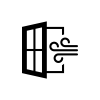
Air Quality (AQ) measurements and related technology
- Room-by-room audits
- Have room-by-room air quality audits been performed on classrooms, labs, offices, washrooms and hallways that York faculty and staff and students are expected to be in to determine if we are meeting recommended standards (e.g. each room meets or exceeds 6 Air Changes per Hour)? [I'm not asking about a building-by-building value or a simulation. I'm asking about real verification.]
- What is the evidence that the ventilation in each room on campus meets or exceeds the 6 air changes per hour (ACH) if York University is not planning to conduct room-by-room air quality audits?
- Will York University install HEPA filter units in rooms which fail to meet the 6 ACH threshold?
- Ventilation data, room by room:
- Will York University instrument rooms on campus to provide real-time CO2 measurements? CO2 measurement has long been accepted to be a good general tool for evaluating air quality, and even more so during the pandemic (https://www.sciencedirect.com/science/article/pii/S0013935121008549).
- For example, McGill University has established a building CO2 measurement schedule: https://www.mcgill.ca/coronavirus/health-safety/ventilation-context-covid-19/co2-measurement-schedule and it shares the results on a weekly basis: https://www.mcgill.ca/coronavirus/health-safety/ventilation-context-covid-19/co2-measurement-results
- Will York University instrument rooms on campus to provide real-time CO2 measurements? CO2 measurement has long been accepted to be a good general tool for evaluating air quality, and even more so during the pandemic (https://www.sciencedirect.com/science/article/pii/S0013935121008549).
- Publishing ventilation data, building by building:
- Will York University share ventilation information on a building-by-building basis in a manner similar to UofT: https://www.fs.utoronto.ca/services/hvac-mechanical-utilities/covid-hvac-strategy/central-ventilation/
- If and when York University’s data is collected, will the raw data from the sensing systems be collected and shared publicly, so that others can conduct their own analyses and visualizations?
Vaccinations exemptions and vaccination statistics
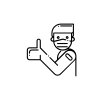
- How many vaccination exemption requests have been submitted to the university and what is the rate of rejection of these requests? [latest values, please]
- For vaccine exemptions, we should report explicitly the total number of exemptions that were granted vs the total number that were requested.
- The exemption request data should be broken down by health and creed categories: Total number requested by category vs total number granted by category, and compared to predicted values (e.g. 0.005% for medical and 0.03% for creed)
- We should also make available the exact list of reasons that health exemptions will be granted as well as how requesters are required to verify that they qualify
- Similarly for creed, we should make available the exact list of creeds that qualify for exemptions as well as documentation demonstrating that those creeds quality. As well, we should know how requesters are required to document that they follow or belong to those creeds.
- Can we expand the vaccination information table in the next iteration of this Executive Committee of Senate document (https://www.yorku.ca/secretariat/wp-content/uploads/sites/107/2021/10/October-7-2021-Communication-Winter-2022-Term.pdf)?
- Can values in the document cited above be provided more frequently on a public website in the form of a dashboard, to include
- Whenever vaccination statistics are reported, the York community should be provided with information on the total size of the York community that should be vaccinated by a specific date. For example, according to the vaccine mandate all students must show proof of vaccination by November 8 to be allowed to come to campus in the winter. At that point, what is the total number of York students, staff and faculty who should have reported their vaccination status. In the case of the Oct 7 data, what is the total number of faculty + staff + students who needed to be on campus who should have reported their vaccination status by that point?
Vaccination documentation fraud and errors
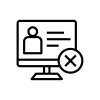
- Have vaccination documents been verified by the university to be authentic? Given the seriousness of the issue and the apparent ease by which fraudulent documents can be created and submitted, the issue of vaccination fraud is a significant one :
- https://globalnews.ca/news/8227825/horizon-health-network-people-to-requests-falsified-covid-vaccination-records/;
- https://www.cbc.ca/news/politics/covid-fake-vaccination-certificates-1.6191154 ;
- https://www.thestar.com/business/2021/09/23/almost-anyone-can-fake-an-ontario-vaccine-certificate-and-concerns-about-bogus-documents-are-mounting.html ;
- https://www.blogto.com/city/2021/10/ontario-police-busted-someone-selling-fake-vaccine-passports/
- https://www.forbes.com/sites/michaeltnietzel/2021/09/29/more-than-half-of-unvaccinated-college-students-admit-lying-about-being-vaccinated/?sh=108d933c23ca
- What is the rate of rejection of vaccination documentation, broken down by reason? (e.g. falsified/fraudulent documentation, incorrect information, vaccination type not recognized by national body, etc.)
Airborne transmission of COVID
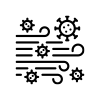
- Do you, in your Special Advisor role, accept that one of the important transmission modes for COVID is airborne? (e.g. aerosol, as opposed to foamite or droplet-based transmission) (https://www.thelancet.com/article/S0140-6736(21)00869-2/fulltext and https://aip.scitation.org/doi/10.1063/5.0057100 ; https://twitter.com/jmcrookston/status/1446874228188487684)
- If you accept evidence of aerosol/airborne transmission of COVID, what are the specific things that the University is doing to address the aerosol-based mode of transmission?
- Have the highest levels of University's administration (e.g. President, Provost, and Senate Executive, as well as the Office of the Counsel) been advised of the airborne (aerosol) nature of COVID?
Masks and Respirators
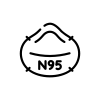
- Given that COVID-19 is a respiratory illness, what is the rationale for not mandating N95 (or equivalent) at York University? Scientific evidence shows us that, in the context of respiratory illnesses, N95 masks are better (safer) options than surgical masks (e.g. https://pubmed.ncbi.nlm.nih.gov/23413265/) or the current York standard of cloth masks, even if they are not fit-tested (https://www.cidrap.umn.edu/news-perspective/2021/10/commentary-what-can-masks-do-part-1-science-behind-covid-19-protection; thread)
- When will official masking documentation policies be updated? Current documentation for masking at York University was written in the context of a 2m distancing protocol. As of October, 2021, the York University administration has removed that restriction in lieu of “0 m”, when will the masking documentation that emphasized 2m scenarios be updated?
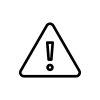
- Will York University's central administration affirm the autonomy of individual academic units to enact stricter COVID mitigation standards than those stated by MCU in the Fall of 2021?
- The Ministry of Colleges and Universities permitted universities and colleges in Ontario to remove many existing restrictions in institutional plans for face-to-face teaching, but given that a spokesperson for MCU has clarified its instructions (https://toronto.citynews.ca/2021/09/01/ontario-lifts-class-size-distancing-requirements-in-indoor-post-secondary-classrooms/) to state that post-secondary institutions “are able to institute their own, stricter rules”, it is clear that a variety of implementation standards are possible.
- Will York University now explicitly accept that it is permissible to require verification of “[Human Rights] Code-related accommodation needs” for people requesting masking exemptions? The Ontario Human Rights Commission has clarified a number of issues in the context of human rights related to COVID, in Section 15 of its “COVID-19 and Ontario’s Human Rights Code – Questions and Answers“ page (bit.ly/2X958cG).
- What, if any, are the penalties for faculty or staff if they exit or refuse to be in a room with unmasked or poorly masked individuals? In particular, what are the penalties, if any, when this is done in the context of an in-person class or lab?
- Can a student refuse to attend a class, lab or other required educational activity if the student determines that the environment to be unsafe in the context of COVID? For instance, can a student leave a lab if they are working in close proximity to a lab partner and that lab partner removes their mask?
Academic Freedom
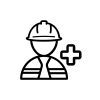
- Can you please reiterate that asking these questions about health and safety at the university clearly fall under the provisions of academic freedom and that no YUFA member should be asked not to enquire about these issues under any circumstance?
- Article 10.01 of the Collective Agreement (https://d3n8a8pro7vhmx.cloudfront.net/cgarchitect/pages/5681/attachments/original/1556283482/Collective-Agreement-Part-1.pdf):
- "The parties agree to continue their practice of upholding, protecting, and promoting academic freedom as essential to the pursuit of truth and the fulfillment of the University’s objectives. Academic freedom includes the freedom of an employee to examine, question, teach, and learn; to disseminate their opinion(s) on any questions related to their teaching, professional activities, and research both inside and outside the classroom; to pursue without interference or reprisal, and consistent with the time constraints imposed by their other University duties, their research, creative or professional activities, and to freely publish and make public the results thereof; to criticize the University or society at large; and to be free from institutional censorship. Academic freedom does not require neutrality on the part of the individual, nor does it preclude commitment on the part of the individual. Rather, academic freedom makes such commitment possible."
- Article 10.01 of the Collective Agreement (https://d3n8a8pro7vhmx.cloudfront.net/cgarchitect/pages/5681/attachments/original/1556283482/Collective-Agreement-Part-1.pdf):
Thanks to Dawn Bazeley and John Dupuis for input!
Corrections, typos, additions, fixes, updates
- Nov 1, 2021: typo in Vaccine doc, fraud and errors section fixed. ("by which fraudulent documents can be created and submitted")
- Nov 5, 2021: Update to state that the Provost of the University replied to my request for answers from our COVID Special Advisor.
James Andrew Smith is a Professional Engineer and Associate Professor in the Electrical Engineering and Computer Science Department of York University's Lassonde School, with degrees in Electrical and Mechanical Engineering from the University of Alberta and McGill University. Previously a program director in biomedical engineering, his research background spans robotics, locomotion, human birth and engineering education. While on sabbatical in 2018-19 with his wife and kids he lived in Strasbourg, France and he taught at the INSA Strasbourg (France) and Hochschule Karlsruhe (Germany). James is a proponent of using social media to advocate for justice, equity, diversity and inclusion as well as evidence-based applications of research in the public sphere. Originally from Québec City, he now lives in Toronto, Canada.
Material on this page is licenced CC-BY (feel free to re-use and adapt!).
